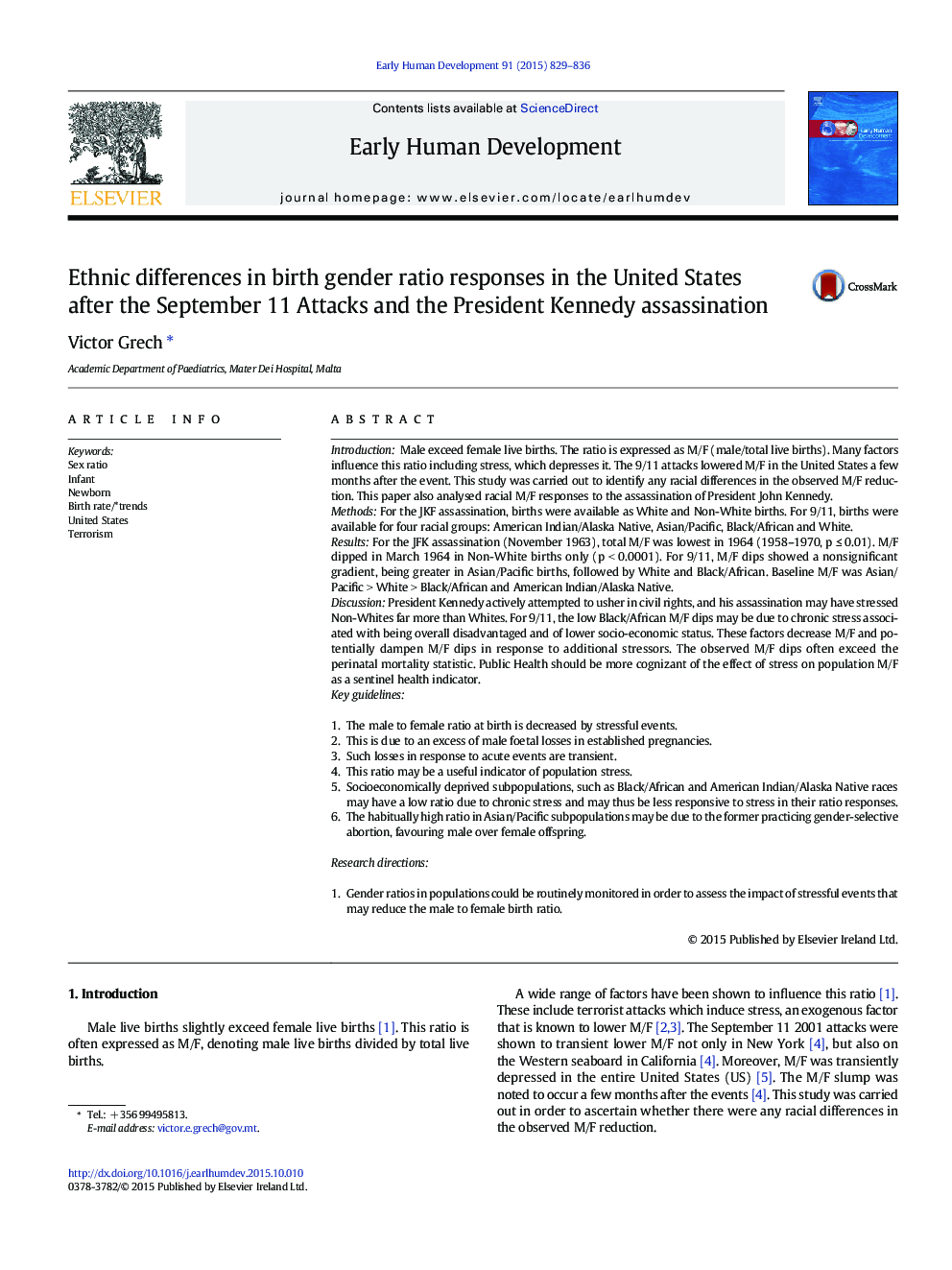| کد مقاله | کد نشریه | سال انتشار | مقاله انگلیسی | نسخه تمام متن |
|---|---|---|---|---|
| 3916725 | 1252069 | 2015 | 8 صفحه PDF | دانلود رایگان |
IntroductionMale exceed female live births. The ratio is expressed as M/F (male/total live births). Many factors influence this ratio including stress, which depresses it. The 9/11 attacks lowered M/F in the United States a few months after the event. This study was carried out to identify any racial differences in the observed M/F reduction. This paper also analysed racial M/F responses to the assassination of President John Kennedy.MethodsFor the JKF assassination, births were available as White and Non-White births. For 9/11, births were available for four racial groups: American Indian/Alaska Native, Asian/Pacific, Black/African and White.ResultsFor the JFK assassination (November 1963), total M/F was lowest in 1964 (1958–1970, p ≤ 0.01). M/F dipped in March 1964 in Non-White births only (p < 0.0001). For 9/11, M/F dips showed a nonsignificant gradient, being greater in Asian/Pacific births, followed by White and Black/African. Baseline M/F was Asian/Pacific > White > Black/African and American Indian/Alaska Native.DiscussionPresident Kennedy actively attempted to usher in civil rights, and his assassination may have stressed Non-Whites far more than Whites. For 9/11, the low Black/African M/F dips may be due to chronic stress associated with being overall disadvantaged and of lower socio-economic status. These factors decrease M/F and potentially dampen M/F dips in response to additional stressors. The observed M/F dips often exceed the perinatal mortality statistic. Public Health should be more cognizant of the effect of stress on population M/F as a sentinel health indicator.Key guidelines1.The male to female ratio at birth is decreased by stressful events.2.This is due to an excess of male foetal losses in established pregnancies.3.Such losses in response to acute events are transient.4.This ratio may be a useful indicator of population stress.5.Socioeconomically deprived subpopulations, such as Black/African and American Indian/Alaska Native races may have a low ratio due to chronic stress and may thus be less responsive to stress in their ratio responses.6.The habitually high ratio in Asian/Pacific subpopulations may be due to the former practicing gender-selective abortion, favouring male over female offspring.Research directions1.Gender ratios in populations could be routinely monitored in order to assess the impact of stressful events that may reduce the male to female birth ratio.
Journal: Early Human Development - Volume 91, Issue 12, December 2015, Pages 829–836
